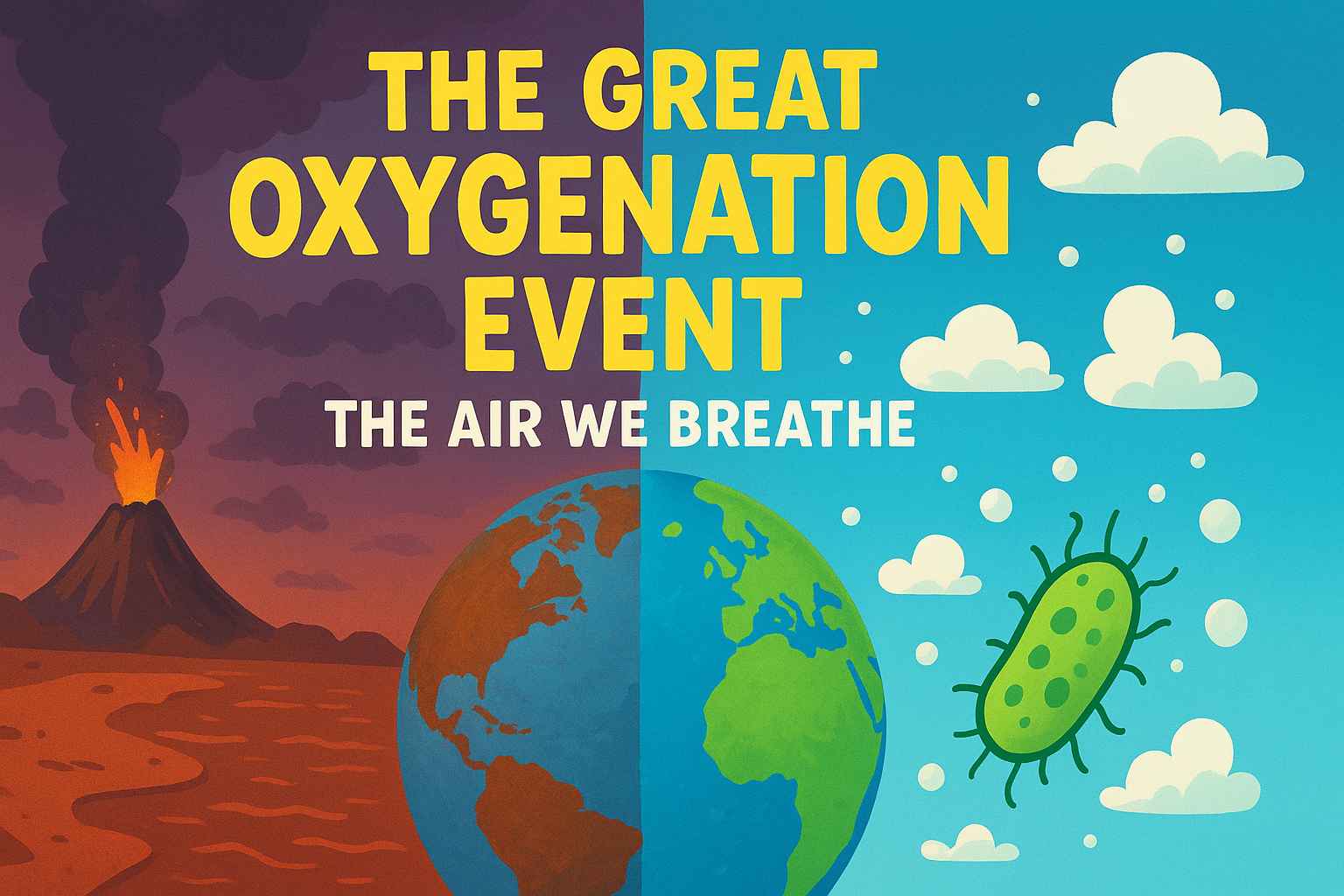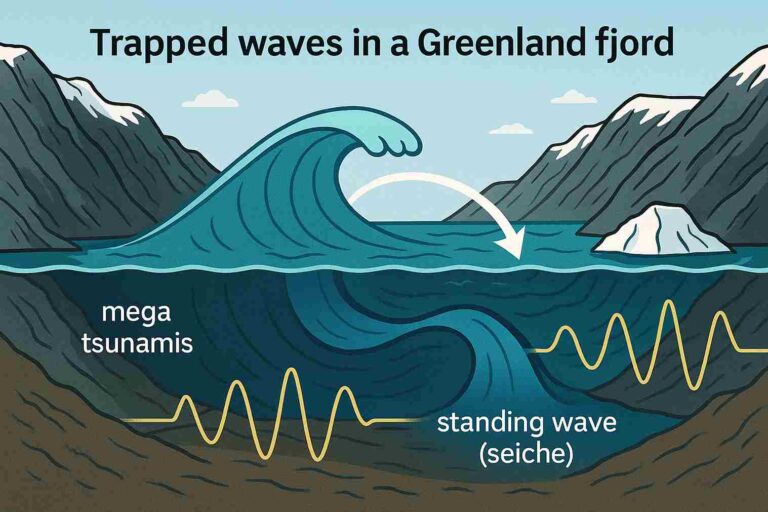
Long ago, Earth’s air didn’t have much oxygen. What changed, and how did life survive?
🌍 Introduction: A Mysterious Breath of Change
Take a deep breath right now. Ahhh… feels good, right? Oxygen fills your lungs, powers your body, and keeps you alive. But here’s the twist — billions of years ago, if you tried to breathe Earth’s air, you’d choke! There was almost no oxygen at all!
So, how did our planet go from an airless world to one buzzing with life and oxygen everywhere? Scientists call this incredible transformation “The Great Oxygenation Event,” or GOE — a mystery that changed the entire planet forever!
⏳ Background: When the Sky Was Poisonous
Travel back in time about 2.4 billion years — long before dinosaurs, plants, or even fish. The sky wasn’t blue; it was filled with toxic gases like methane and carbon dioxide. The oceans were rusty red, full of iron, and the only living things were tiny microbes that didn’t need oxygen to survive.
Then something astonishing happened — some of these microbes learned a new trick: photosynthesis!
These tiny heroes, called cyanobacteria, could use sunlight, water, and carbon dioxide to make their own food — and as a waste product, they released oxygen!
At first, the oxygen didn’t go into the air. It reacted with iron in the oceans, creating layers of banded iron rocks — which scientists can still find today! But eventually, after millions of years, oxygen began to fill the atmosphere.
That’s when the trouble — and magic — began.
🧠 The Theories: How Did Life Survive the Great Change?
As oxygen spread, it didn’t just freshen the air — it caused chaos! For most early microbes, oxygen was poison. Many died out. Others hid deep underground or in the ocean, where oxygen couldn’t reach.
Scientists have a few fascinating theories about what happened next:
- The Survivor Theory: Some microbes evolved to use oxygen instead of being harmed by it. These became the ancestors of animals, including us!
- The Frozen Earth Theory: The oxygen reacted with methane — a greenhouse gas — and cooled the planet so much that Earth froze into a giant snowball! Yet, somehow, life still clung on under the ice.
- The Balance Theory: Volcanoes and the oceans worked like nature’s “thermostat,” keeping oxygen levels from swinging too wildly until ecosystems could adjust.
No one knows exactly which theory is correct — and that’s what makes it such a thrilling science mystery!
🧩 Mini Quiz: Test Your Oxygen IQ!
1. What gas did cyanobacteria release that changed Earth forever?
A) Carbon dioxide B) Oxygen C) Methane
2. Why did early life forms struggle when oxygen appeared?
A) They couldn’t breathe it B) It was poisonous to them C) They turned into rocks
3. What color were the early oceans?
A) Blue B) Green C) Rusty red
(Answers at the bottom!)
🌟 Fun Facts: The Oxygen Oddities!
🪨 Rock Records: Those beautiful striped rocks called banded iron formations are actually ancient clues from the Great Oxygenation Event!
🌬️ Too Much of a Good Thing? Oxygen is vital for us, but if Earth ever had too much, fires could spread faster and animals might have evolved differently.
🧬 Cyanobacteria Still Live Today! They’re found in oceans, ponds, and even aquariums — quietly making oxygen just like their ancient ancestors did billions of years ago!
💡 Encouragement to Explore: Can You Solve the Oxygen Mystery?
Imagine you’re a time traveler visiting ancient Earth. Could you survive in a world without oxygen? What inventions or experiments might help you create breathable air?
Scientists are still studying how this massive oxygen change happened — and how it shaped every living thing that came after. Maybe one day, you could uncover new clues about how our planet took its first breath!
So, take another deep breath… and thank those ancient cyanobacteria for giving us the air we breathe today. 🌬️💙
✅ Quiz Answers:
- B) Oxygen
- B) It was poisonous to them
- C) Rusty red






